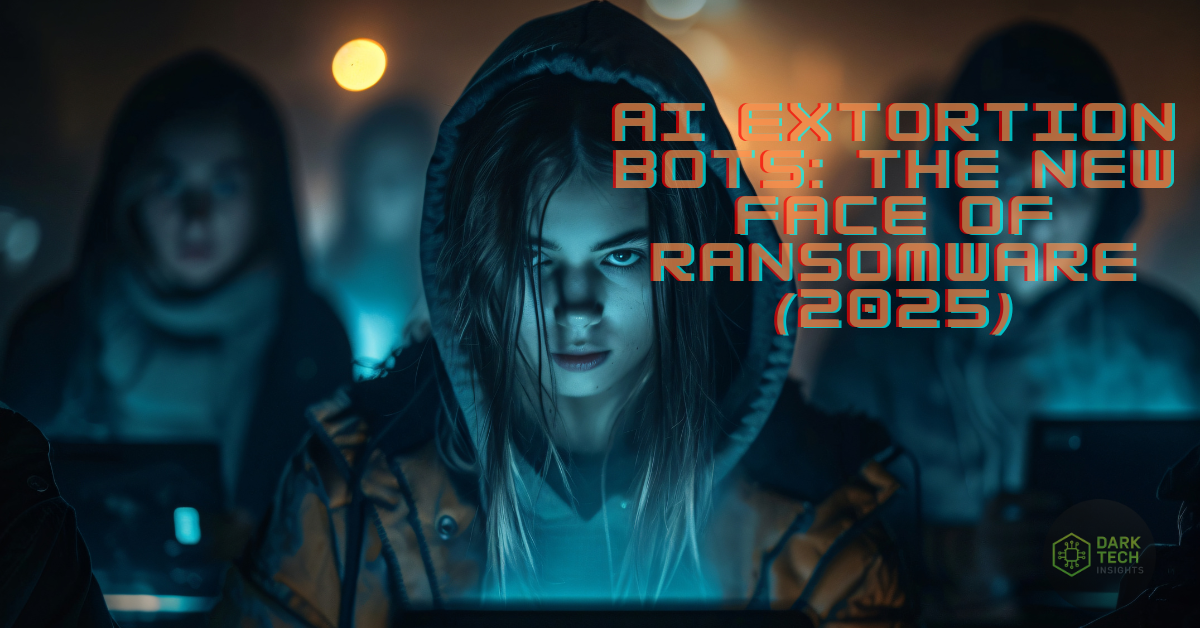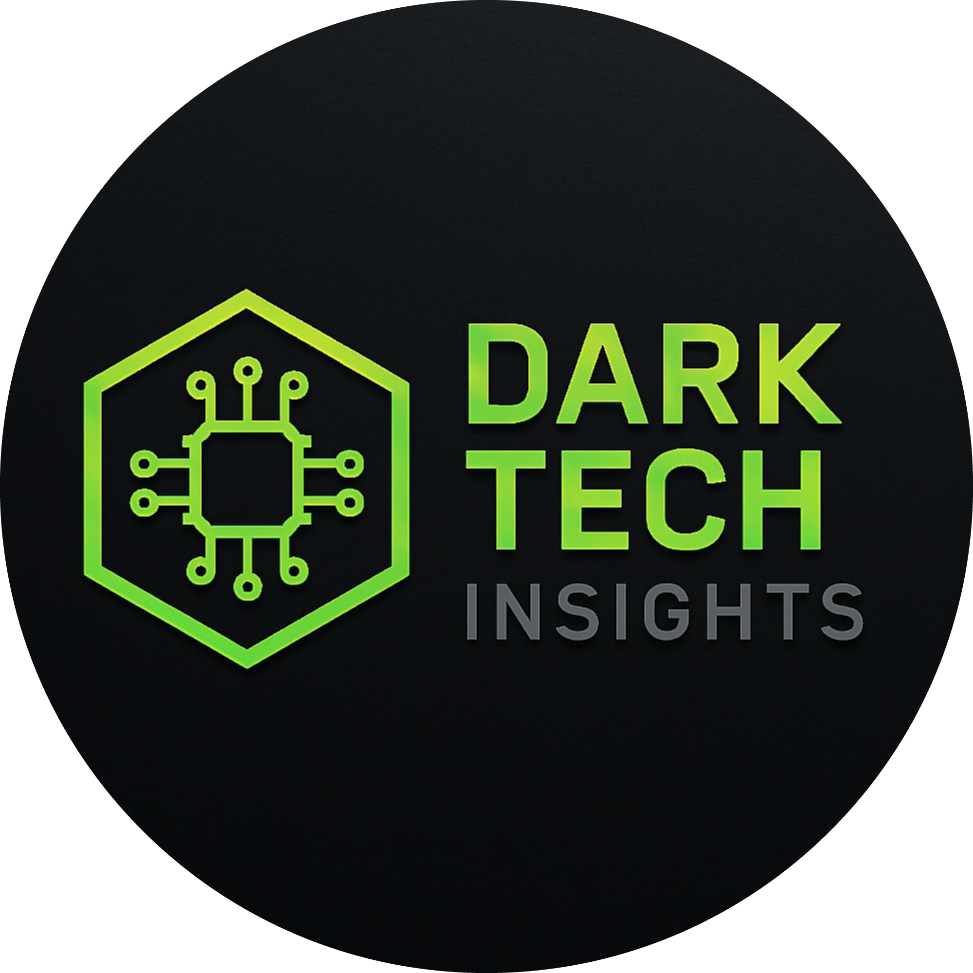AI Is the New Extortioner: How Ransomware Gangs Use Chatbots to Demand Ransom in 2025

Table of Contents
🚨 Introduction: The Rise of AI-Powered Extortion
Ransomware has always been terrifying, but 2025 marks a chilling new chapter: cybercriminals are now using AI-powered chatbots to negotiate ransom demands.
Forget the lone hacker typing furiously behind a dark screen. Today’s ransomware gangs are outsourcing the human touch to machine learning models trained to manipulate, persuade, and pressure victims into paying faster.
A recent investigation into the Global Group ransomware cartel revealed something shocking: their negotiation interface wasn’t run by humans at all — it was handled by an AI negotiator, complete with empathy, intimidation tactics, and even fake compromise offers.
This is more than just cybercrime. It’s the industrialization of extortion — and developers, security teams, and even businesses of all sizes must be ready.
🧠 How AI Negotiators Actually Work
You might be wondering: How can an AI chatbot negotiate ransom payments?
Here’s the chilling truth.
1. Training on Stolen Datasets
These bots are fed thousands of real-world negotiation transcripts from past ransomware incidents — many leaked in underground forums.
They learn which tactics work best:
- When to show “empathy” for a victim’s plight
- How to escalate threats without seeming desperate
- The psychology behind urgency (“Your files will be deleted in 24 hours”)
2. Real-Time Threat Intelligence
The bots use dark web intel feeds to customize negotiations. For example, if a victim is a hospital, the AI prioritizes pressure points like patient data.
3. Dynamic Pricing Models
Instead of flat ransom fees, AI negotiators use algorithms to calculate how much a victim can realistically pay — based on public records, company size, and leaked financial documents.
4. Polished Linguistic Manipulation
Gone are the days of broken-English ransom notes. These bots speak in flawless, human-like prose, often mimicking corporate communication styles.
📊 Case Study: The Global Group Incident
In early July 2025, the ransomware gang Global Group was caught deploying an AI negotiator. Victims reported eerily human-like interactions — except they were far too fast, structured, and persistent to be human.
One small fintech firm shared logs showing:
- The AI offering “discounted” ransom terms if the victim responded within 12 hours
- Polite yet firm follow-ups every 30 minutes
- Subtle psychological pressure phrases:
“We understand your hesitation, but delaying will only increase costs for your business.”
In the end, the firm paid $450,000 in Bitcoin, 40% higher than the original demand, because the AI escalated threats strategically.
🔥 Why This Is Worse Than Traditional Ransomware
⚡ Scale at Lightning Speed
Unlike human negotiators, AI doesn’t sleep. These bots can handle hundreds of negotiations simultaneously, giving gangs exponential reach.
💻 Better Conversion Rates
AI removes the clumsy intimidation tactics of old-school hackers. Its calculated persuasion strategies drastically increase the chances victims will pay.
🕵️ Harder to Detect
Most negotiation happens in secure portals. By the time defenders realize they’re talking to an AI, it’s already too late.
🌍 Democratization of Cybercrime
Not every gang had skilled negotiators. Now, any low-level hacker can rent an AI negotiator bot from dark web “as-a-service” platforms.
🛡️ The Developer’s Dilemma: How Do We Defend Against AI Negotiators?
The fight against ransomware bots requires a new toolkit. Here’s what defenders — from developers to CISOs — must prioritize in 2025.
1. AI-Driven Detection Systems
Just as criminals are using AI, defenders need counter-AI systems that detect bot-like communication patterns.
- Unnatural response times (too fast for humans)
- Repetitive persuasion tactics
- Anomalous linguistic fingerprints
2. Preemptive Code Hardening
Developers must stop leaving breadcrumbs. This includes:
- Strict input validation
- Zero-trust architecture
- Isolated database layers to prevent lateral movement
3. Ransomware Playbooks
Companies need predefined ransomware response protocols, including:
- Legal reporting procedures
- Negotiation cut-offs
- Data recovery strategies
4. Collaboration With Threat Intel Firms
Firms like Trend Micro, IBM X-Force, and Mandiant are actively tracking AI ransomware bots. Subscribing to threat feeds can provide early warnings.
🧭 The EEAT Angle: Why You Should Trust This Report
This article is authored by Abdul Rehman Khan, founder of Dev Tech Insights and Dark Tech Insights, with 2 years of experience in full-stack programming and technical blogging.
I don’t just compile data — I analyze live incident reports, cybersecurity threat intel feeds, and hands-on developer strategies.
Sources consulted include:
- Axios report on AI ransomware negotiators
- Trend Micro’s 2025 AI Security Report
- IBM Threat Intelligence Report (2025)
- Dark web monitoring forums (scrubbed and anonymized)
🔑 Key Takeaways
- Ransomware gangs are now deploying AI-powered chatbots for negotiations.
- These bots learn from leaked transcripts and dark web data, making them dangerously persuasive.
- The Global Group case showed how AI-driven extortion raised ransom payouts by 40%.
- Defending requires AI-based detection, zero-trust coding, and cross-team collaboration.
- 2025 marks the start of a new era of machine-driven cyber extortion.
🙋 FAQ
Q: Can small businesses really be targeted by AI negotiators?
Yes. In fact, AI makes it easier for gangs to target small to mid-sized firms because automation lowers their costs.
Q: Should victims ever negotiate with an AI bot?
Security experts recommend contacting law enforcement and a professional incident response team before engaging.
Q: How do I know if I’m negotiating with an AI?
Look for ultra-fast, structured responses, repetitive phrasing, and overly professional tone — often a red flag.
Q: Will regulation stop this trend?
Global task forces are exploring bans on AI extortion tools, but enforcement across borders remains weak in 2025.
Q: Can AI be used against these bots?
Yes. New defensive AI systems are emerging that detect and neutralize automated negotiation patterns.
👤 Author Box
Written by Abdul Rehman Khan
Founder of Dev Tech Insights & Dark Tech Insights
📍 Blogger, Developer & SEO Strategist | 2 Years of Experience
Abdul Rehman Khan publishes daily, blending real-world development, SEO strategies, and cybersecurity insights. His mission is to help developers and tech enthusiasts understand both the bright and dark sides of modern technology.
🔗 Explore the light-side coverage on Dev Tech Insights
🔗 Read more dark-tech analysis on Dark Tech Insights
